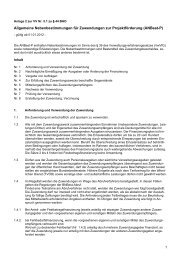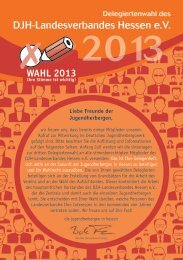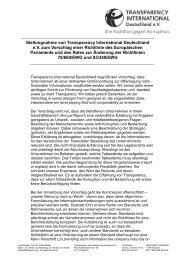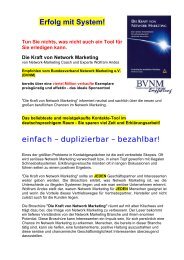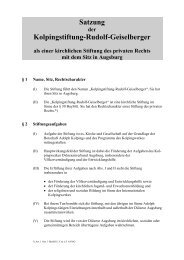REPA Booklet - Stop Epa
REPA Booklet - Stop Epa
REPA Booklet - Stop Epa
Create successful ePaper yourself
Turn your PDF publications into a flip-book with our unique Google optimized e-Paper software.
12<br />
WTO Rules<br />
How important is the requirement that new trade arrangements are WTO compatible?<br />
It is the most critical phrase in the entire Cotonou Agreement and casts a lethal shadow over the proposed<br />
Economic Partnership Agreements. In the future, policy choices of all ACP governments on subjects covered<br />
by WTO agreements could be trapped within the straitjacket of ‘conformity with the WTO’ or ‘WTO compatibility’.<br />
What does the Cotonou Agreement actually require?<br />
According to the objectives in Article 34:<br />
Economic and trade cooperation shall be implemented in full conformity with the provisions of the<br />
WTO, including special and differential treatment, taking account of the Parties’ mutual interests<br />
and their respective levels of development.<br />
“The WTO claims to be<br />
a multilateral trading<br />
organization which<br />
addresses the<br />
circumstances of all<br />
its Members, and<br />
whose rules provide a<br />
balance of advantages<br />
for all its constituents.<br />
However, this is<br />
unfortunately not true<br />
for the small,<br />
vulnerable<br />
economies …”<br />
(Hon Kaliopate Tavola,<br />
Fiji Minister of Trade,<br />
2003)<br />
Article 36 on the ‘modalities’ for the new trade arrangements says<br />
the parties agree to conclude new World Trade Organisation compatible trading arrangements,<br />
removing progressively barriers to trade between them and enhancing cooperation in all areas<br />
relevant to trade.<br />
Article 37.7 that deals specifically with Economic Partnership Agreements says the negotiations must take into<br />
account the level of development, the socio-economic impact of the trade measures and the capacity of ACP<br />
countries to adapt and adjust to liberalisation. Assuming these factors are properly assessed (which they<br />
haven’t been so far), they could affect the length of the transition period and the products that are finally covered<br />
(taking account of ‘sensitive’ sectors) and allow different timetables for the European Union and the ACP<br />
countries to implement the agreement. However, the degree of flexibility is limited by the requirement that they<br />
conform ‘with WTO rules then prevailing’.<br />
What are the relevant WTO rules?<br />
Strict rules apply when a ‘developed country’ (such as the EU) signs a new regional trade agreement, even if<br />
the other parties to the agreement are the poorest countries in the world. These rules are set down in GATT<br />
Article XXIV. They require the parties to the agreement to remove the tariffs on ‘substantially all trade’ between<br />
them, normally within 10 years. In exceptional circumstances they can seek a longer transition time.<br />
What does this mean in practice for ACP countries?<br />
Because goods and most agricultural products from ACP countries already enter the EU duty free, this won’t<br />
have much effect on the European Union. It is the ACP States that will have to remove their tariffs on ‘substantially<br />
all trade’ with the EU within a finite period.<br />
Is that the only effect of ‘WTO compatibility’?<br />
No. If an EPA was extended to cover services it would have to meet the requirements of the WTO’s General<br />
Agreement on Trade in Services (GATS) Article V: that it cover a substantial number of sectors and not exclude<br />
any ‘mode of supply’ (such as foreign investment). In theory it would also have to accord with GATS provisions<br />
that favour ‘developing’ countries, but the European Commission has been at the forefront of blocking attempts<br />
to give those provisions any meaning. Many other issues that have been targeted for negotiations under<br />
Cotonou are also covered by WTO rules, such as intellectual property, technical barriers to trade and sanitary<br />
and phytosanitary measures. Any agreements on these issues will have to conform to the relevant WTO rules.<br />
Is ‘special and differential treatment’ also part of WTO compatibility?<br />
The ACP States are relying heavily on this, especially because it is specifically referred to in Article 34 of the<br />
Cotonou Agreement. The Agreement also promises to recognise the different needs and levels of development<br />
of ACP countries and regions. Part V of the Agreement makes specific provision for Least Developed Countries,<br />
landlocked states and island states. This establishes a hierarchy, where the Parties<br />
- reaffirm ‘their attachment’ to ensuring special and differential treatment for all ACP States.<br />
- shall ‘ensure’ special treatment for the Least Developed Countries;<br />
- shall ‘take due account’ of the vulnerability of small, landlocked and island countries; and<br />
- shall ‘take into consideration’ the needs of post-conflict states.<br />
28<br />
A People’s Guide To The Pacific’s Economic Partnership Agreement



